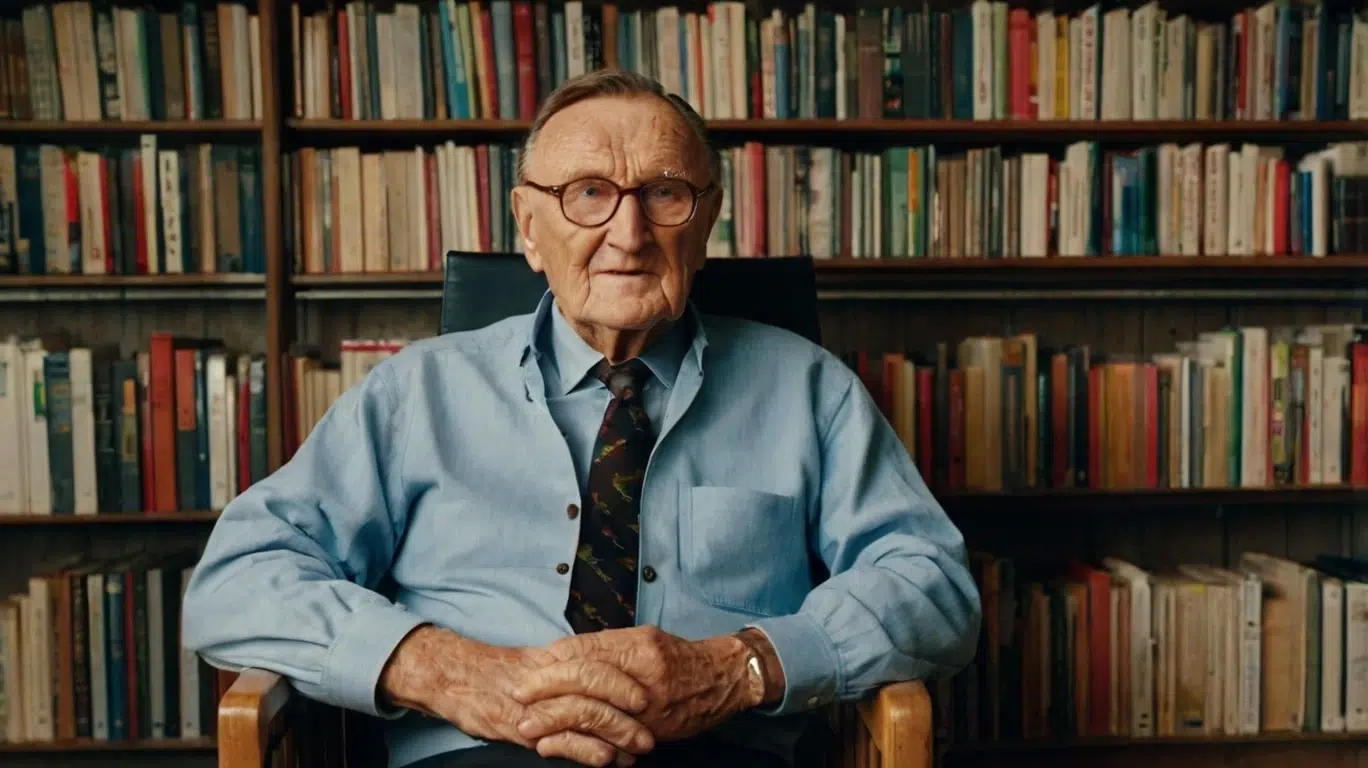Have you ever wondered how a challenge can become your greatest strength? For Ingvar Kamprad, the founder of IKEA, dyslexia was not a setback but a driving force behind his success. In a world where reading difficulties often lead to frustration, Kamprad turned his unique thinking into an advantage, revolutionizing the furniture industry.
Kamprad’s dyslexia pushed him to find innovative solutions, shaped his approach to business and design, and led to the creation of simple, flat-pack furniture that was easy to assemble. His unique vision and determination transformed IKEA into a global powerhouse.
By reading today’s post, you’ll discover how Kamprad’s dyslexia fueled his creativity and problem-solving skills. You’ll learn valuable lessons on turning obstacles into opportunities. Get ready to be inspired by the incredible journey of a man who built a furniture empire against all odds.

The Early Life of Ingvar Kamprad: Overcoming Dyslexia
Ingvar Kamprad was born in 1926 on a small farm in Sweden. From a young age, he struggled with dyslexia. Reading and writing were difficult for him, making school a challenge. Despite this, Kamprad showed an early knack for business. He started by selling matches to neighbors, then expanded to fish, seeds, and Christmas tree decorations.
Kamprad’s dyslexia forced him to develop strong problem-solving skills. He learned to simplify complex tasks and find creative ways to remember information. Instead of viewing his condition as a hindrance, he embraced it. This mindset laid the foundation for his future success.
The key lesson from Kamprad’s early life is resilience. He didn’t let dyslexia define him. Instead, he used it to cultivate perseverance and innovative thinking. For those facing similar challenges, Kamprad’s story is a reminder that obstacles can be transformed into strengths.
Innovative Thinking: How Dyslexia Shaped IKEA’s Business Model
Kamprad’s dyslexia led him to think differently, which became a cornerstone of IKEA’s success. Traditional business methods didn’t work for him, so he had to devise new ways to communicate and operate. This necessity drove him to create clear, visual instructions and simple product names, making IKEA’s products more accessible to everyone.
His innovative approach extended to product design and logistics. Kamprad introduced the flat-pack concept, allowing customers to transport furniture and assemble it at home easily. This idea not only reduced shipping costs but also revolutionized the furniture industry. Flat-packing became a hallmark of IKEA, showcasing how a challenge can inspire groundbreaking solutions.
Kamprad’s dyslexia also influenced his management style. He valued straightforward communication and hands-on leadership. He built a cohesive company culture by focusing on clear, concise messaging. This approach ensured that all employees understood and contributed to the company’s vision regardless of their roles.
For aspiring entrepreneurs, Kamprad’s story is a powerful reminder. Embrace your unique perspective. Use your challenges as a springboard for innovation. You can turn obstacles into opportunities and build a successful business model by thinking outside the box.
Flat-Pack Revolution: Simplifying Furniture Assembly
The flat-pack concept was born from Kamprad’s need to overcome logistical challenges. His dyslexia made traditional manufacturing and shipping methods seem cumbersome. He realized that he could save space and reduce costs by disassembling furniture for shipping. This insight led to creating flat-pack furniture, a revolutionary idea that set IKEA apart from competitors.
Flat-pack furniture wasn’t just about cost savings. It also empowered customers. By providing easy-to-follow visual instructions, IKEA made furniture assembly accessible to everyone. This approach demystified the process and put control into the hands of consumers. Kamprad’s strategy transformed a potential barrier into a key selling point, fostering customer satisfaction and loyalty.
Kamprad’s innovative solution offers a crucial lesson for businesses. Simplification can lead to greater efficiency and customer engagement. By breaking down complex tasks into manageable steps, you can enhance user experience and streamline operations. Kamprad’s flat-pack revolution illustrates how thinking differently can lead to industry-changing innovations, reinforcing the value of simplicity and creativity.
Turning Challenges into Strengths: Lessons from Kamprad’s Journey
Kamprad’s journey is a powerful example of turning challenges into strengths. Research by Dr. Julie Logan from Cass Business School found that 35% of entrepreneurs are dyslexic. This study highlights how adversity can foster resilience and creativity. Kamprad used his dyslexia to develop innovative solutions that propelled IKEA to global success.
Embracing your challenges can lead to unique strengths. Kamprad’s dyslexia forced him to simplify communication and problem-solving, skills that became invaluable in business. His experience teaches us that obstacles can be powerful motivators for growth and innovation.
Another lesson from Kamprad’s story is the importance of a positive mindset. Viewing dyslexia as a source of creativity rather than a hindrance enabled him to see opportunities where others saw problems. This perspective shift is crucial for overcoming personal and professional challenges.
Kamprad’s approach offers valuable advice. Recognize and leverage your unique abilities. Use your challenges as a catalyst for innovation and success. His journey underscores that you can transform difficulties into advantages with the right mindset, creating a lasting impact in your field.
The Rise of IKEA and Its Lasting Impact
IKEA’s rise from a small Swedish business to a global furniture giant is a testament to Kamprad’s innovative spirit and resilience. His unique approach to business, influenced by his dyslexia, created a brand synonymous with affordable, stylish, and functional furniture. IKEA revolutionized how people furnish their homes by focusing on customer needs and simplifying the shopping experience.
IKEA’s impact extends beyond furniture. The company’s emphasis on sustainability has set new standards in the industry. IKEA invests in renewable energy and sustainable sourcing, demonstrating that profitability and environmental responsibility coexist. Kamprad’s vision of efficiency and simplicity paved the way for these sustainable practices, showcasing the lasting influence of his innovative mindset.
For aspiring entrepreneurs, IKEA’s success offers valuable insights. Prioritize customer experience and sustainability. Innovate by addressing real-world challenges with creative solutions. Kamprad’s legacy reminds us that with perseverance and a forward-thinking approach, businesses can achieve long-term success and positively impact the world.
“The only way to do great work is to love what you do.”
— Steve Jobs
Ingvar Kamprad’s story reminds us that challenges can become our greatest strengths. From his early struggles with dyslexia to creating IKEA’s innovative business model, Kamprad turned obstacles into opportunities. His dyslexia inspired clear communication, simplified designs, and the revolutionary flat-pack concept. Kamprad’s journey teaches us the value of resilience, creative problem-solving, and a positive mindset. His impact on the furniture industry and commitment to sustainability continues to inspire entrepreneurs worldwide.
Reflecting on Kamprad’s legacy, I am reminded of the incredible potential within each of us to transform our difficulties into successes. His story encourages us to embrace our unique perspectives and to innovate fearlessly.
What challenges have you faced, and how have they shaped your journey? Share your thoughts and experiences in the comments below. Let’s inspire each other to turn our obstacles into strengths!





